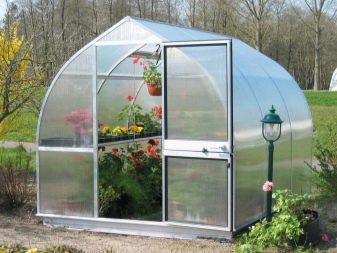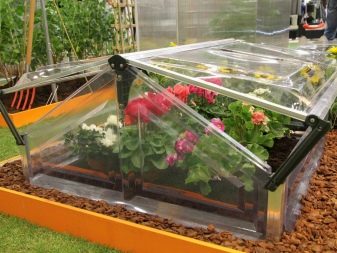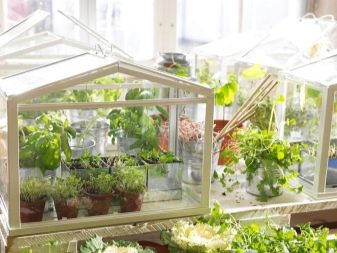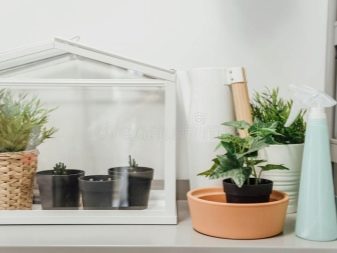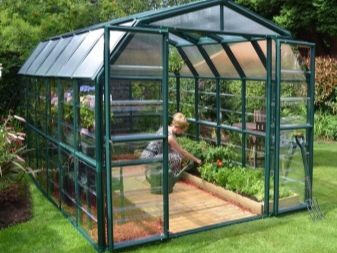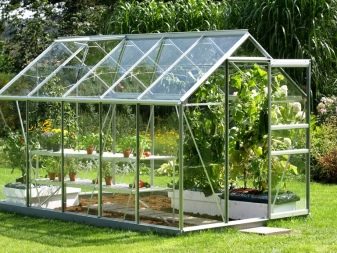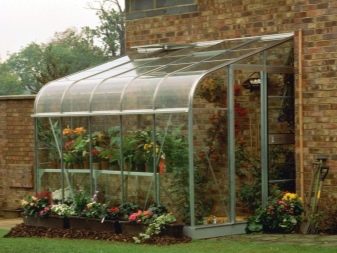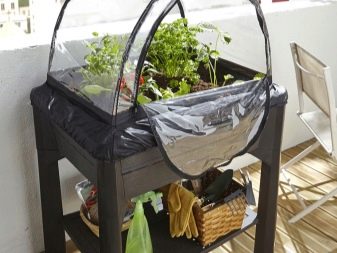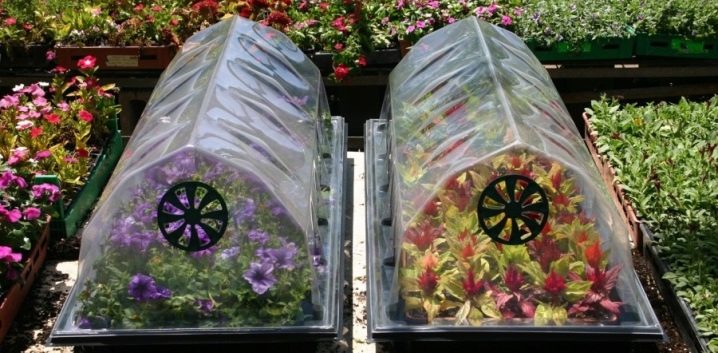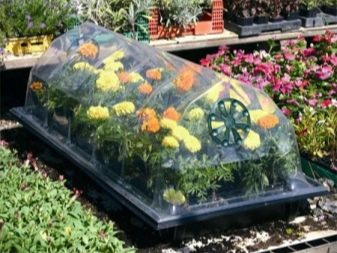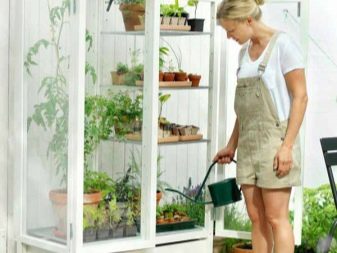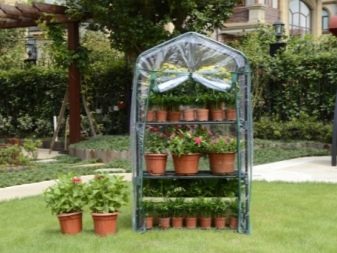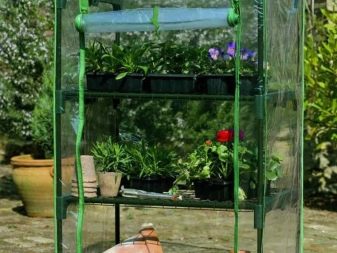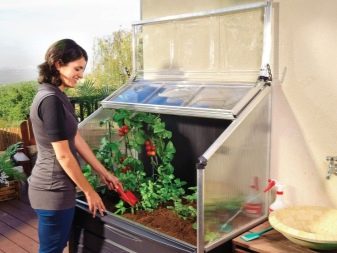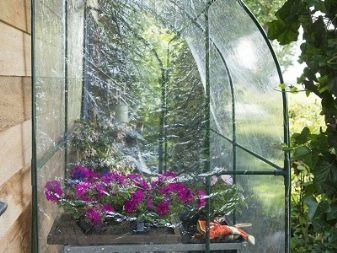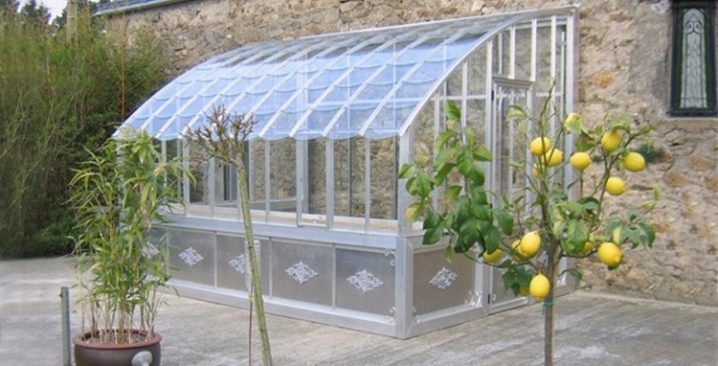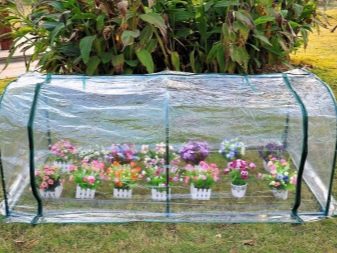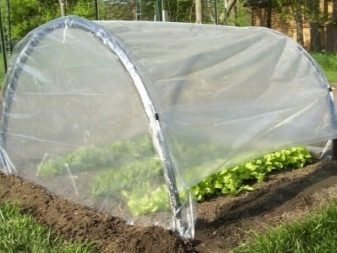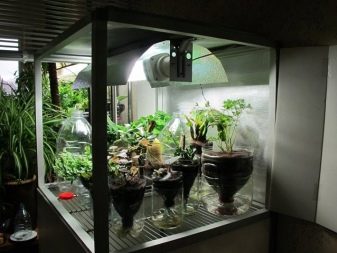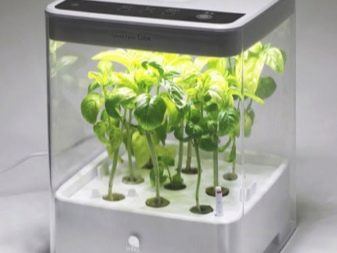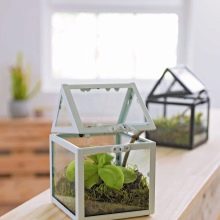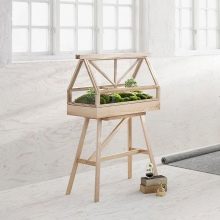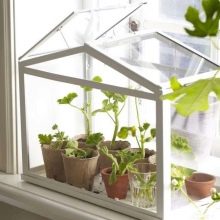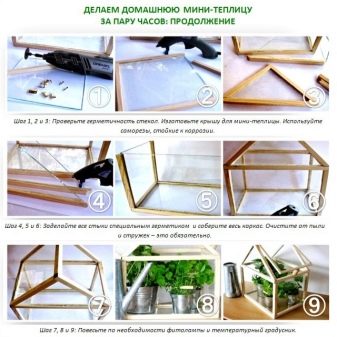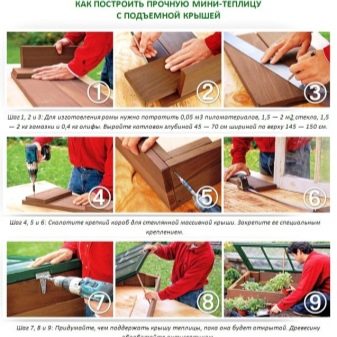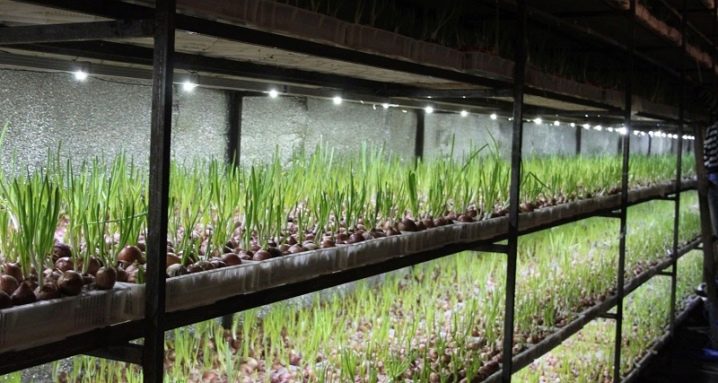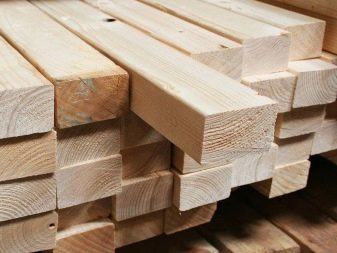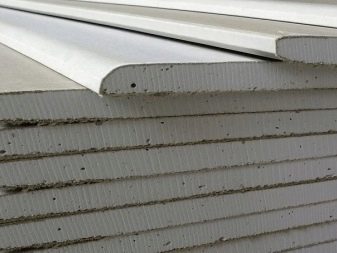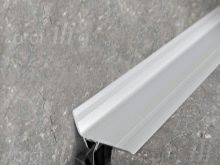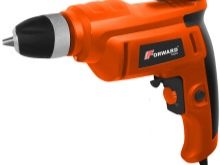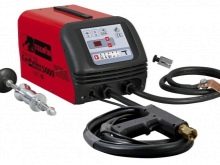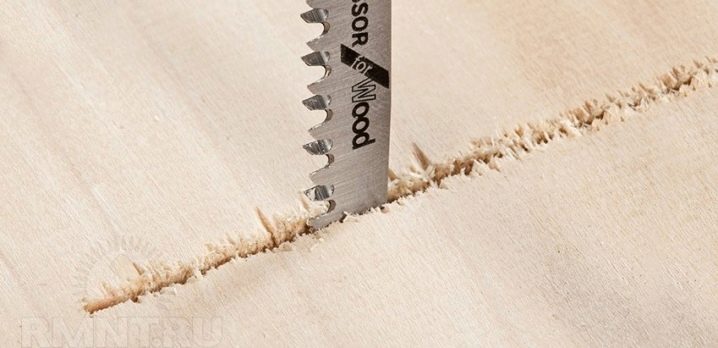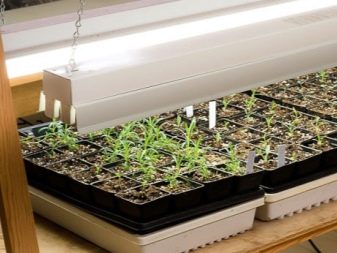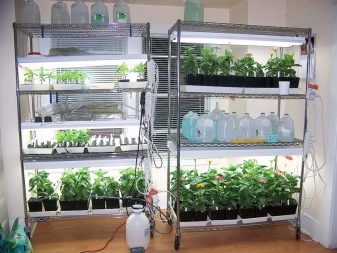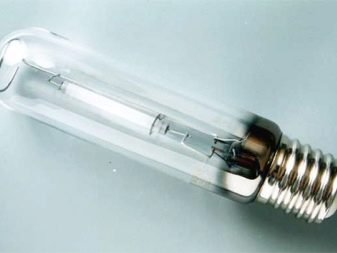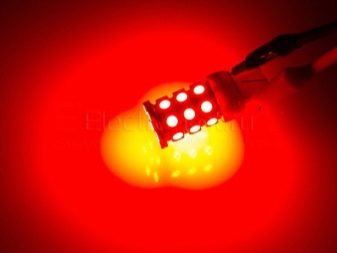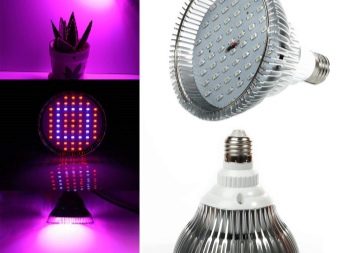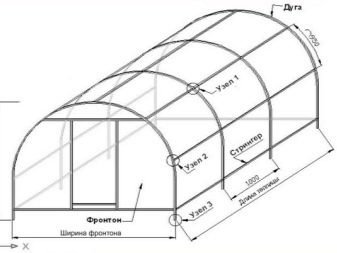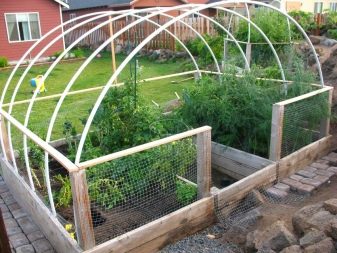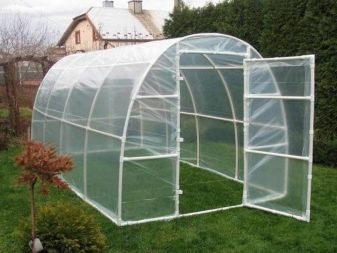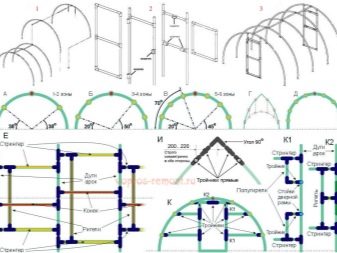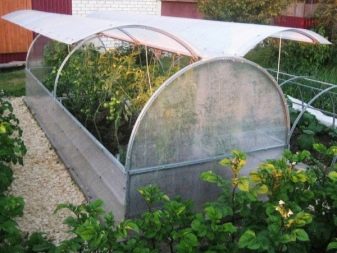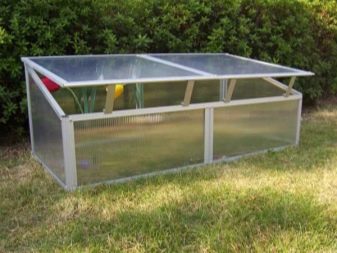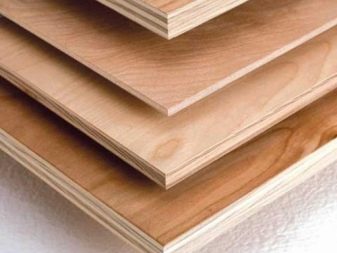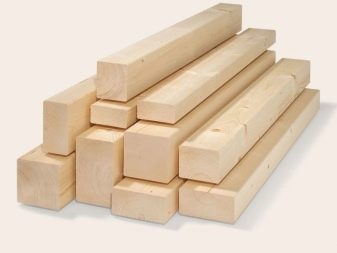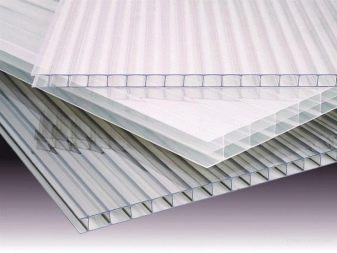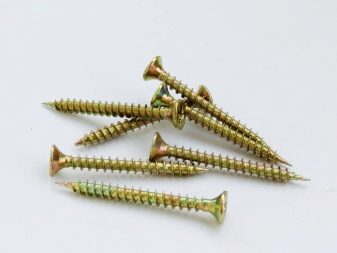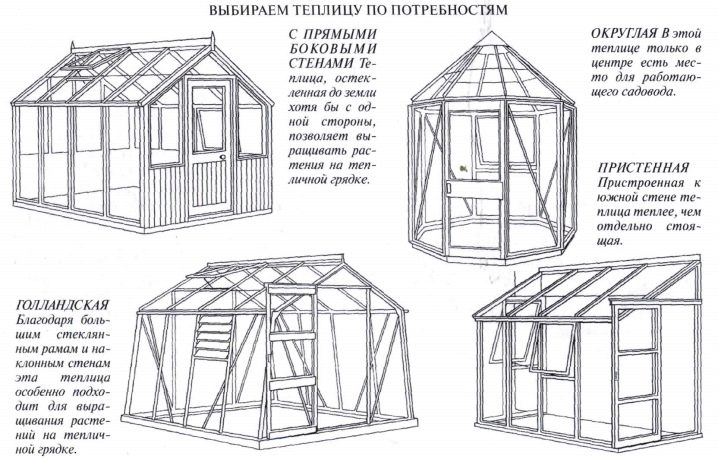Mini-greenhouses: options and features of the device
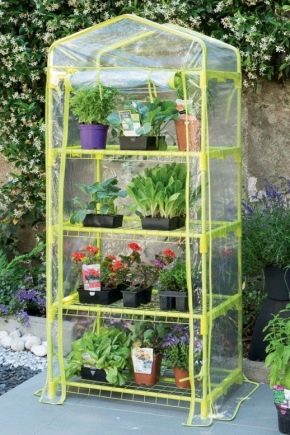
Mini-greenhouse - an indispensable thing in the country, and in the house. With its help, you can prepare the seedlings for planting in the ground, despite the surprises of the unpredictable Russian climate to grow flowers, cucumbers, tomatoes and other vegetables. It is convenient to choose and buy mini-greenhouses in the store or make them yourself from scrap materials.
Requirements and location
A greenhouse must be convenient to use and meet several requirements:
- provide good access to plants for their maintenance;
- free to conduct sunshine;
- have good ventilation;
- have excellent strength properties to use it for many years;
- have an attractive appearance.
A small greenhouse there is a place not only in the country. It can also be placed on a balcony, loggia or even in a room of a regular apartment, which will allow not only to carry out preparatory work for the summer season, but also to provide yourself with fresh greenery throughout the year.
In a residential area, a mini-greenhouse should find its place depending on the degree of illumination of the selected area. Often home “houses” for seedlings and vegetables are equipped with additional lighting - this allows you to compensate for the lack of natural light and put the greenhouse where it will not interfere.
The difference between greenhouse and greenhouse
When it comes to greenhouses, this concept is mixed with the concept of a greenhouse. This applies to cases when it comes to mini-structures of the greenhouse type. The principal difference between such structures is that both a large greenhouse and a small greenhouse under the influence of solar energy are heated by biological processes occurring in the “pillow” of manure or compost, creating a greenhouse effect under the roof.
In a greenhouse, the atmosphere is closer to the natural, although here the defining moment is heated by the sun or other source of heat. In conditions of a small greenhouse, the differences with the principle of the greenhouse are smoothed out, and the microclimate in them becomes approximately the same.
Types and features
Mini-type greenhouses differ depending on the size, method of production (branded or self-made), according to their design, as well as the possibility of their transfer and transportation from place to place.
The purpose of the designs is also different. There are small greenhouses in which seedlings and seeds are sprouted in the conditions of a summer cottage. There are similar designs for "balcony application".
In addition, at the Russian private farmsteads one can find the best realized projects of compact greenhouses for growing cucumbers, tomatoes, peppers and other crops, the fruits of which delight Russians in fresh or cooked form.
Many mini-greenhouses that are on sale, have the prefix "eco". However, it is obvious that their device, as well as the quality of the grown vegetables, does not affect in any way.
Below are the features of the types of greenhouses.
Portable
This is a simple and convenient design that is easily installed on any level ground within the garden.It is better to find a point for it where there is no constant shadow from tall bushes, trees or a wall. Such a structure is usually coated with a film or polycarbonate. The foundation for such a structure is not installed, which ensures the construction of mobility. In this case, you need to think over the fasteners of the structure, otherwise it will be carried away by the very first gust of wind.
Cupboard
The plus of such a mini-greenhouse lies in the fact that on several shelves you can compactly place a large number of plants - this allows you to grow a good crop even in an apartment. Those who are more interested in flowers, can put such a window in the room, which will give the interior originality. Among mini-greenhouses for a city apartment there are very small ones, while others are no different in size and general appearance from cabinet furniture, which in a particular situation can be both a virtue and a disadvantage.
You can buy ready-made wardrobe greenhouse. The most economical option is the mesh shelves inside the metal frame, covered with a transparent cover with a zipper. With its help, it is possible to regulate the access of fresh air to the “green tenants”,and no problem to maintain them as needed.
There are more advanced models that are endowed with a ventilation system, heating and other functions. However, such models are more expensive.
Branded cabinets, greenhouses often have wheels. This "furniture" if necessary in the spring and summer period can be transported to the country or moved to the balcony.
To reduce the cost of such a cabinet, it can be made independently of available tools. For a person who has at least some construction experience and is a little versed in technology, it will not be difficult.
Wall
A small greenhouse can be attached to the wall of the house, which gets a lot of sun. This approach is quite common in Western countries, and in Russia it is adopted quite rarely. This greenhouse has many advantages. For example, this design takes up little space on the site.
The wall on the sunny side accumulates enough heat.to create a comfortable microclimate inside the annex. It should be borne in mind that heat is transferred from the wall to the "green veranda" even at night. This fact leads tothat the growing season of plants in this structure is stretched. Consequently, organic fresh vegetables of own production will be longer on the table.
But since the useful area of such a greenhouse is small, then for a large family the harvest from it will be missed.
With a thoughtful approach, a mini-greenhouse of this kind can be turned into a real decoration of the plot., especially if you grow flowers in it. It is only necessary to think over the original flower arrangements, which in the glazed house will look like on a shop window, attracting the views of everyone around them.
Film
Greenhouses of this type have their positive and negative sides. The film is inexpensive, and mounted on the frame it is not difficult. When you need to provide airing plants, then remove such a coating is also easy. At the same time, this material does not differ by good durability, it does not last long and has to be periodically updated.
For the winter, the film must be removed from the greenhouse, because under the weight of the snow, it still breaks. Although, on the other hand, while doing this work, you do not have to worry about the need to periodically go to the country and rake snow from the roof so that the structure does not break.
Greenhouses of this type can only be used during the warm season - it is impossible to keep heat under them during frosts. So this option is not for those who are ready to engage in vegetable production year-round.
Automatic
Even the greenhouse in our time can be turned into a high-tech design - automatic designs refer to just such a category. In appearance they can be attributed to the category of cabinets. These are the so-called grobux. They grow small plants. The necessary atmosphere is created in an automatic greenhouse by artificial means starting with the approach to the organization of lighting.
Fans, special lamps, timers, voltage relays, hygrometers, filters, watering systems and other attributes of a closed biosystem are included in the work. Outwardly, such a greenhouse may look like ordinary furniture, or it may be something like a special fabric tent - such greenhouses are called growers.
All these wonders of agrotechnology are very expensive. It is necessary to think and well calculate how justified the cultivation of various crops with the help of such technological features.The cost of vegetables obtained from the miracle cabinet sometimes turns out to be exorbitant.
Significantly reduce the cost of an automatic mini-greenhouse can, if you buy a kit to create it in a specialized company and collect it all in his own in an old cabinet, refrigerator or other suitable case.
Decorative
The meaning of decorative mini-greenhouses is to create comfort for indoor plants. Use them for more practical purposes is impossible.
Such designs usually have very small sizes.fits on a windowsill or table. You can make them yourself from the capacity of a small aquarium or glass jar. At the bottom of such dishes arrange drainage, poured on top of a layer of earth, and then planted flowers. In such a "house" those of them that grow slowly are best.
A decorative mini-greenhouse can not only provide a special comfort to the “green pet”, but also become a decoration of the room, giving it coziness.
How to make yourself?
Often for those who are accustomed to grow their own seedlings, flowers, greens for the table, cucumbers, tomatoes and other vegetables for the home,it is also fundamentally to build with your own hands and additional accessories for beds or a kitchen garden, including a mini-greenhouse for growing different crops (regular or reinforced).
Rack with backlight
The backlit shelving may simply be an indispensable thing in the house before the opening of the garden season at the cottage itself. It is made of different materials: metal profile, plastic pipes or wood. Choose the material for construction is the one with whom the usual work. The rack is a construction of several shelves, standing one above the other. If the house has a lot of space, you can make a stationary structure.
The folding rack is good because it can be rearranged from one place to another, adjusting the size. It is mainly used in the spring when you need to prepare the seedlings before planting it in the garden, and then dismantled before the start of the next season. You can also build a window rack with struts for the entire height of the window opening.
Implementation of the project for the construction of such a structure begins with the development of a scheme and determination of the dimensions of the rack.
To make a simple wooden mini-greenhouse, you need to prepare:
- timber;
- drywall;
- corner profile;
- foil.
To work, stock up with a hacksaw, drill, hammer, nails or self-tapping screws.
First, the first side of the rack is manufactured. To vertical bars with a step of 60 cm fasten the crossbar - this is the reason for the shelves. The first crossbar should be at a distance of 15-20 cm from the floor.
In the same way going to the second half of the design. Between the supports fix the shelves of plasterboard. Above, two crossbars are fixed, on which the lamps for plants will hold. Inside the rack is sheathed with foil - it will increase the light output. Then, two lamps are installed above each shelf, which should be bright, but not hot, so as not to damage the leaves of the plants with excessive heat.
If you want to make a metal rack, you need to prepare to create it the following tools and materials:
- bolts;
- electric drill;
- drill;
- welding machine;
- metal corner;
- plywood or thick glass.
In addition, when the shelves are made of plywood, you will need a saw, and if they are glass, you need a glass cutter.
It is necessary to consider how large the structure should be. Corner of metal should be divided into four racks of the same size, as well as to prepare the transverse strips. Then you should perform horizontal bearing flanges for the shelves and drill holes for bolts in the joints. After that, you need to connect the racks and cross bars, and go through welding to the places where the shelves will be placed. When the frame is formed, you need to cut the shelves of the required size and lay them on the designated allotted specifically for these purposes.
There is the option of manufacturing shelves without shelves. The width of the transverse planks should be such that the boxes with seedlings or flower pots do not fall through them.
It remains to make the lighting. Lamps can be fastened with the help of wire, ribbons made of tin or using other improvised means.
If you don’t want to build a solid rack, and there isn’t enough window sill size for the boxes with earth, you can simply attach the supports to the window slopes and fix the shelves. Despite the fact that in this case special lighting should also be provided for seedlings, it is better to place the shelves near the window facing south.
In order not to affect the window itself, it is possible to make a rack from a ready-made furniture shield suitable for window sill sizes. Side racks with shelves are fastened with screws or nails.
It remains to establish this simplest structure in the window opening. Usually it makes no more than four shelves. This amount is just enough to accommodate the entire seedlings, if it is not prepared "on an industrial scale." As for the lighting of any of the rack options, sodium lamps, as well as fluorescent with cold light or LED (blue or red in color) are suitable for such mini-greenhouses.
Fitolamps intended for greenery are becoming increasingly popular. They also shine in red or blue. Thanks to their use, plants grow stronger, grow quickly and look good. The simplest shelving with such a backlight will be a great help in the cottage business.
With pipe frame
If there is a need to make a mini-greenhouse on the plot, then the garden bed itself can be surrounded with a wooden frame, and the upper part, which provides a suitable microclimate for the plants, can be made of plastic pipes and covered with plastic film.
The advantage of using plastic pipes to create a frame is that they allow you to make a structure of any size, including the smallest. The shapes of mini-greenhouses can also be very different, since the pipes are bent, have different diameters, and can be connected in a variety of ways: using clamps, furniture bolts that are screwed into specially made holes, and even put on glue. This is a kind of designer, opening up wide opportunities for garden construction. Another thing is that the greenhouse on such a frame will be an easy construction. Therefore, you need to take care to properly strengthen it on the ground.
To make an arched frame for a mini-greenhouse, you should wear a pipe on a pin previously made into the ground from metal. Then you need to bend and put it on the pin on the other side of the future greenhouse, to get the arc. For the strength of the future frame, the resulting element must be screwed to the wooden base.
In the same way, the required number of arcs is established through an equal distance. Then the end parts of the greenhouse are made.A plastic door can be made doorway and vents, if they are provided by the scheme.
In order to properly cover the structure with polyethylene, it should be distributed over the entire structure, leaving a small stock of material on the sides, and then attached to the frame with clamps.
Polycarbonate
In the manufacture of mini-greenhouses from this material must be borne in mind that it should be built at a temperature of +10 degrees. This condition is related to the properties of the material of the future coating, which, depending on the temperature, is compressed and expanded.
If you build in warmer weather, the polycarbonate sheets will be more than they are. However, later, when it gets colder outside, they will shrink, and gaps will appear in the structure. For this reason, the microclimate under the roof of the mini-greenhouse will be broken.
If you take up construction in the middle of winter, then later, with the onset of hot days, the greenhouse will twist due to the fact that the expanded elements of the coating will no longer fit into the allotted distance. As a result, all the work done will be wasted.
To build a small mobile greenhouse, you need to prepare the following materials and tools:
- sheet of plywood for the bottom;
- bars for mounting rafters;
- polycarbonate;
- self-tapping screws.
In order to assemble a frame on which the coating can hold, you need to take bars of a small thickness. They are joined end-to-end with screws. The sides are the strapping to which the rafters join. They are built in such a way that a gable roof would later turn out. Cover it with polycarbonate, fastening pieces of material also with self-tapping screws.
At the ends of the building they make folding doors, thanks to which it is possible to provide ventilation inside the mini-greenhouse.
The wheels are attached to the “house”, and the bottom is covered with a film on which the earth is poured. Mini polycarbonate greenhouse is ready.
Similarly, you can make a structure with a single-sided roof or in the form of a small transparent "trunk" with a hinged lid.
In the next video you will find the installation of a homemade mini-greenhouses.
